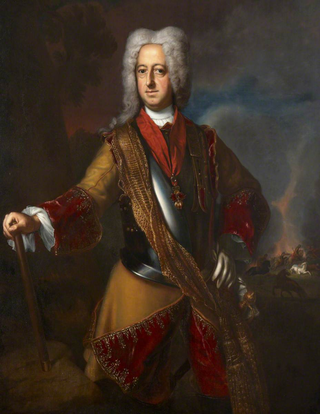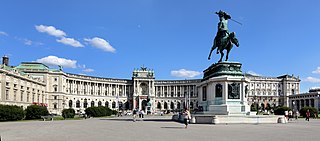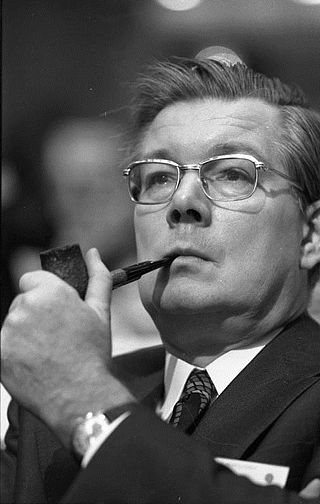Related Research Articles

Frederick III was Holy Roman Emperor from 1452 until his death in 1493. He was the penultimate emperor to be crowned by the pope, and the last to be crowned in Rome. He was the first emperor from the House of Habsburg, which was to retain the title until it disappeared centuries later.

Hubert Languet was a French diplomat and reformer. The leading idea of his diplomacy was that of religious and civil liberty for the protection and expansion of Protestantism. He did everything in his power to advance the union of the Protestant churches.

Maximilian II was Holy Roman Emperor from 1564 until his death in 1576. A member of the Austrian House of Habsburg, he was crowned King of Bohemia in Prague on 14 May 1562 and elected King of Germany on 24 November 1562. On 8 September 1563, he was crowned King of Hungary and Croatia in the Hungarian capital Pressburg. On 25 July 1564, he succeeded his father Ferdinand I as Holy Roman Emperor.

Maximilian, Margrave of Baden, also known as Max von Baden, was a German prince, general, and politician. He was heir presumptive to the throne of the Grand Duchy of Baden, and in October and November 1918 briefly served as the last chancellor of the German Empire and minister-president of Prussia. He sued for peace on Germany's behalf at the end of World War I based on U.S. President Woodrow Wilson's Fourteen Points and took steps towards transforming the government into a parliamentary system. As the German Revolution of 1918–1919 spread, he handed over the office of chancellor to SPD Chairman Friedrich Ebert and unilaterally proclaimed the abdication of Emperor Wilhelm II. Both events took place on 9 November 1918, marking the beginning of the Weimar Republic.

Maximilian II, also known as Max Emanuel or Maximilian Emanuel, was a Wittelsbach ruler of Bavaria and a prince-elector of the Holy Roman Empire. He was also the last governor of the Spanish Netherlands and Duke of Luxembourg. An able soldier, his ambition led to conflicts that limited his ultimate dynastic achievements.

Maximilian Kolbe was a Polish Catholic priest and Conventual Franciscan friar who volunteered to die in place of a man named Franciszek Gajowniczek in the German death camp of Auschwitz, located in German-occupied Poland during World War II. He had been active in promoting the veneration of the Immaculate Virgin Mary, founding and supervising the monastery of Niepokalanów near Warsaw, operating an amateur-radio station (SP3RN), and founding or running several other organizations and publications.

Matthias was Holy Roman Emperor from 1612 to 1619, Archduke of Austria from 1608 to 1619, King of Hungary and Croatia from 1608 to 1618 and King of Bohemia from 1611 to 1617. His personal motto was Concordia lumine maior.

Maximilian I was an Austrian archduke who became emperor of the Second Mexican Empire from 10 April 1864 until his execution by the Mexican Republic on 19 June 1867.

Maximilian II reigned as King of Bavaria between 1848 and 1864.

Melchior Klesl was an Austrian statesman and cardinal of the Roman Catholic Church during the time of the Counter-Reformation. He was minister-favourite of King and Emperor Matthias (1609-1618) and a leading advocate for peace between the empire's different confessional leagues before the Thirty Years' War.

The Hofburg is the former principal imperial palace of the Habsburg dynasty in Austria. Located in the centre of Vienna, it was built in the 13th century and expanded several times afterwards. It also served as the imperial winter residence, as Schönbrunn Palace was the summer residence. Since 1946, it has been the official residence and workplace of the president of Austria.

The Residenz in central Munich is the former royal palace of the Wittelsbach monarchs of Bavaria. The Residenz is the largest city palace in Germany and is today open to visitors for its architecture, room decorations, and displays from the former royal collections.

The Duchy of Württemberg was a duchy located in the south-western part of the Holy Roman Empire. It was a state of the Holy Roman Empire from 1495 to 1803. The dukedom's long survival for over three centuries was mainly due to its size, being larger than its immediate neighbors. During the Protestant Reformation, Württemberg faced great pressure from the Catholic emperors to remain loyal. Württemberg resisted repeated French invasions in the 17th and 18th centuries, the duchy being directly in the path of French and Austrian armies who were engaged in the long rivalry between the House of Bourbon and the House of Habsburg. In 1803, Napoleon raised the duchy to be the Electorate of Württemberg. On 1 January 1806, the last elector assumed the title of King of Württemberg. Later that year, on 6 August 1806, the last Emperor, Francis II, abolished the Holy Roman Empire.

Archduke Maximilian Francis of Austria was Elector of Cologne and Grand Master of the Teutonic Knights. He was the youngest child of Holy Roman Empress Maria Theresa and Francis I, Holy Roman Emperor. He was the last fully functioning Elector of Cologne and the second employer and patron of the young Ludwig van Beethoven.

The Galli–Bibiena family, or Galli da Bibiena, was a family of Italian artists of the 17th and 18th centuries, including:

Giuseppe Galli Bibiena , Italian designer, became the most distinguished artist of the Galli da Bibiena family.

The Electorate of Bavaria was a quasi-independent hereditary electorate of the Holy Roman Empire from 1623 to 1806, when it was succeeded by the Kingdom of Bavaria.

Ernst Benda was a German legal scholar, politician, and judge. He was the fourth president of the Federal Constitutional Court of Germany from 1971 to 1983. He also held the position of Minister of the Interior of Germany from 1968 to 1969.

John Frederick was Duke of Pomerania from 1560 to 1600, and Bishop of Cammin (Kamień) from 1556 to 1574. Elected bishop in 1556 and heir of the duchy in 1560, he remained under the tutelage of his great-uncle Barnim XI until he took on his offices in 1567.

The Large Triumphal Carriage or Great Triumphal Car is a large 16th-century woodcut print by Albrecht Dürer, commissioned by the Holy Roman Emperor Maximilian I. The work was originally intended to be the central part of a 54 metres (177 ft) long print of a Triumphal Procession or Triumph of Maximilian, depicting Maximilian and his court entourage in a procession. This section shows the emperor in his triumphal car, and was part of a tradition depicting imaginary "triumphs" or real processions, such as royal entries.
References
- ↑ Walter Pass Musik und Musiker am Hof Maximilians II 1980
- ↑ Biography on Grove Music Online (subscription required)
- ↑ Hyperion Records